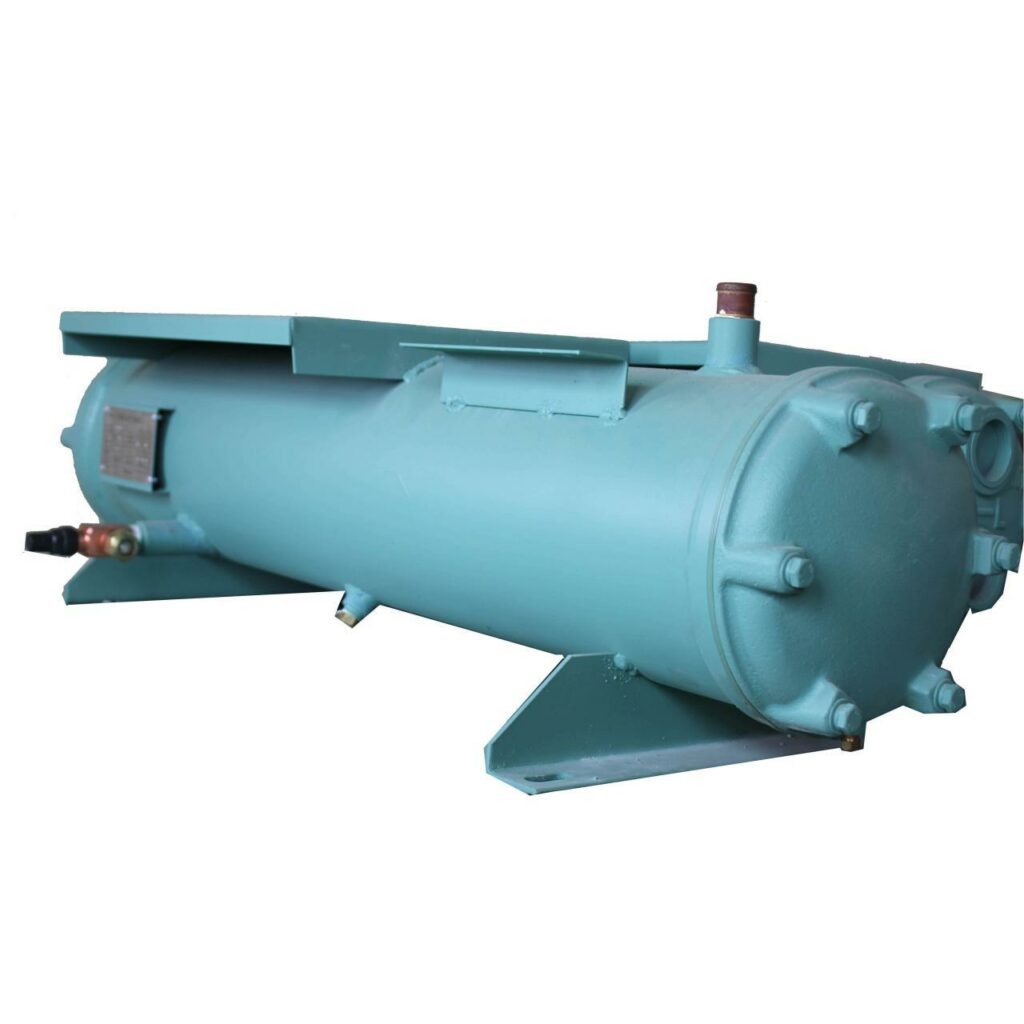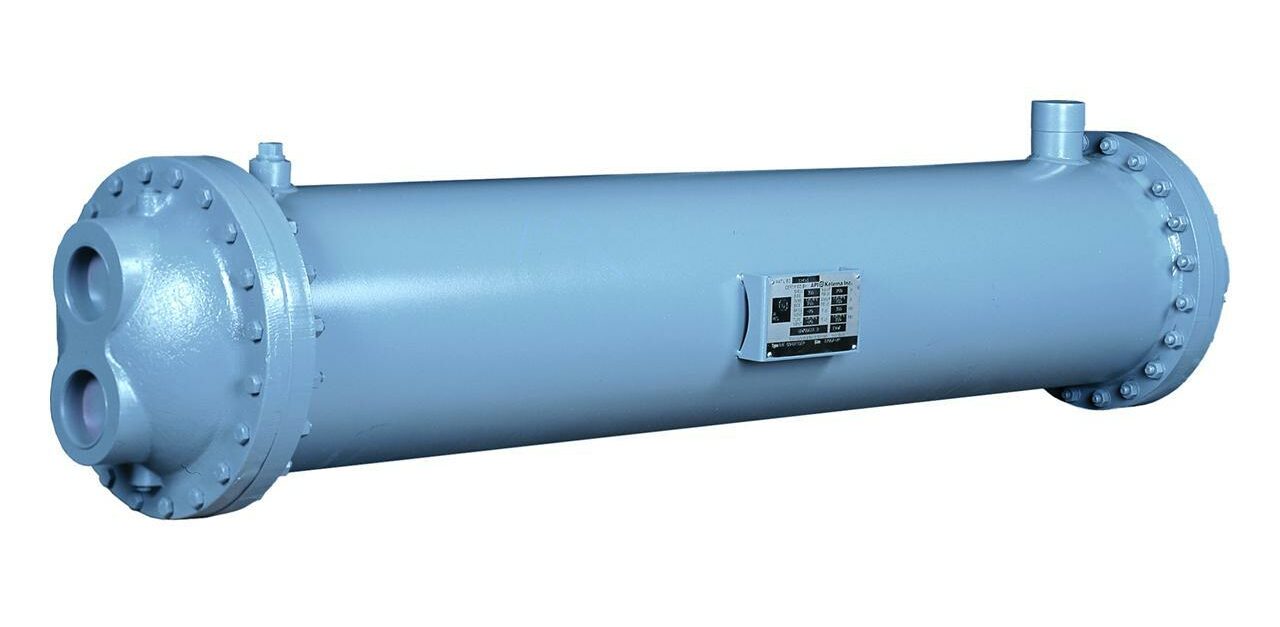If you are curious to know different water cooled condenser types, you are at the right place. In this article, we will introduce the most popular water-cooled HVAC condenser types and talk about their mechanism to help you gain deeper knowledge in the subject. Linquip is here to provide all the necessary information for you to help expand your knowledge on this subject. Are you ready to learn? Then read on.
But first, let’s know what a water-cooled condenser is:
What is a water-cooled condenser?
Water-cooled condenser Wikipedia definition is that it’s a type of condenser used in HVAC systems. Condensers have different types such as air cooled condenser, evaporative condenser, and a water-cooled condenser. This categorization is based on their cooling methods.
How water cooled condensers reject the heat
These condensers are among the most important HVAC parts. Water cooled condenser types have been designed to remove the excess heat in the unit by turning it into the liquid form. The water-cooled condenser coil is among the condenser part that’s responsible for liquefying the heat. Water cooled condenser unit contains controlling devices and compressor as well.
In the water cooled condenser, the process happens with the circulation of water through the coils and tubes. This process cools the heated air.
Wikipedia continues “They are commonly used for swimming pools and condensers piped for city water flow, these condensers require regular service and maintenance. To prevent corrosion and the forming of algae, water cooled condensers require a constant supply of makeup water along with water treatment. Depending on the application you can choose from a double-tube, double-pipe, shell and coil or shell and tube condensers. All are essentially made to produce the same outcome, but each in a different way.”
Although water-cooled condensers have a high maintenance cost, they are energy-efficient enough to make up for the cost.
Now, we’ll learn about different water cooled condenser types.
Water cooled condenser types
There are different types for this condenser that each one of them is designed to suit different needs. We will introduce the most common types to help you choose the right one for your application. Here are 4 popular water cooled condenser types:
-
Double-pipe condensers
Double-pipe condensers are among popular condensers. There are tubes in this type that have horizontal motion and form a vertical bank. In order to liquefy the hot air, a compressed refrigerant goes through the pipes. The result would be turning the hot air into the liquid form and then create a counter flow by flowing downward.
-
Shell and coil condensers
Another one of the water cooled condenser types that is called shell and coil condenser. A copper coil is used inside this condenser in the shell. The material used to create the shell is usually steel. The discharging of a refrigerant vapor inside the compressor happens while the water runs through the copper coil. The discharge then condenses the air in the cold tubes.
Although this type is more affordable than other condensers, the maintenance cost and its repairing cost is high.
-
Double-tube condensers
In this type of condenser, a refrigerant flows through the condenser’s outer tubes while the water flows through inner tubes. In this design, as the name suggests, there are different tubes inside and outside the condenser. The inner tubes are small and the outer ones are large and are formed into a coil-shape that helps save the space as well as reducing the costs. There’s usually a cooling tower inside this condenser type to help the re-circulation of the water.
-
Shell and tube condensers
Shell and tube water cooled condenser is the last item on our list that we want to explain to you. This popular condenser type contains different steel shell tubes with water. The hot air will turn into the liquid form on the surface of the tubes. The liquid then flows to the condenser’s bottom. This condenser type is used in large HVAC units. The tubes in this design can be easily removed from their shell to be cleaned with the help of brushes.
So, you just read about the four most popular water cooled condenser types and learned their difference. There are many other condenser types that you can choose from, so don’t forget to check out other options as well to make an informed decision. Keep in mind that the common problem in these 4 types is corrosion since the water that’s used inside the condenser will be re-circulated, resulting in the high salt concentration.
The salt then is responsible for the corrosion of these condensers. But don’t worry about it too much because there are different coatings you can use to help reduce the risk of corrosion and you can ask your HVAC installer to recommend the best one for your specific condenser type. As well as the coating, regular maintenance and inspections to keep the condenser under control and cleaning the system will help to avoid the corrosion as much as possible.
Now that you know a lot about water cooled condenser types, do you want to share your opinion about this subject? And if you have any experiences with water cooled condensers, feel free to write a comment below and share your knowledge with us. Plus, Linquip has skilled experts that can help you with all your problems and questions. All you need to do is to sign up on our website and one of our experts will solve all your problems.





I am interested in knowledg with your supporting man
Thanks for visiting our website, Tipu! You can visit our Industrial Equipment page, where you can find various pumps based on your application and demand. You can also visit our expert page and take advice from hundreds of professionals on your issue.